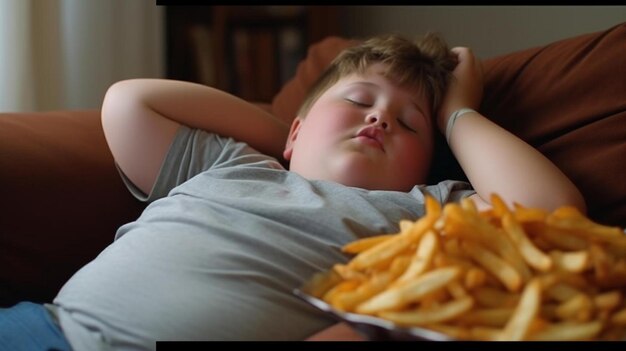Unpacking Childhood Obesity: Unique Causes and Preventive Strategies for a Healthier Generation
Childhood obesity is rapidly emerging as one of the most pressing health challenges of the 21st century. While genetics and diet have long been recognized as contributors, the issue is far more complex than simply eating too much or moving too little. Let’s delve into some unique causes of childhood obesity and explore holistic, practical ways to combat them.
One often overlooked contributor is emotional disconnect in the family. Children experiencing stress, neglect, or inconsistent parenting may turn to food for comfort, forming unhealthy eating patterns early in life. Emotional eating in kids is rarely addressed and can be a major driver of excessive weight gain. To prevent this, fostering open communication and emotional bonding at home is crucial. Parents should be present, listen actively, and model healthy ways to deal with emotions.
Another unique factor is the digital babysitter phenomenon. With increasing screen time and reduced physical play, children are becoming more sedentary. But it’s not just about watching TV or playing games—it’s about what they’re missing out on: movement, imagination, and social development. A key solution here is to create screen-free zones and encourage outdoor unstructured play, which boosts physical activity and cognitive flexibility simultaneously.
Lack of sleep is another silent contributor to childhood obesity. Research shows that inadequate sleep alters hormone levels, increasing hunger and reducing satiety. This often leads to mindless snacking and larger portion sizes. The preventive strategy here is to establish a consistent bedtime routine and limit stimulating activities at night like screen exposure or heavy meals, ensuring the child gets restorative rest.
Furthermore, over-scheduled lifestyles can ironically make children more prone to weight gain. With back-to-back tuition classes and extracurriculars, kids may miss out on physical activity or rely on quick, processed foods for energy. To counter this, it’s important to prioritize balance over busyness—ensuring children have free time to be active, eat home-cooked meals, and engage in slow, mindful living.
Even marketing and packaging manipulation plays a sneaky role. Brightly packaged snacks, cartoon endorsements, and misleading labels trick children into consuming calorie-dense, nutrient-poor foods. One prevention method is to educate kids about food labels and empower them to make conscious food choices, even from a young age.
Ultimately, preventing childhood obesity requires more than lectures about food and exercise. It demands rethinking the environment and habits we’re cultivating around our children every day.
By addressing these unique yet impactful causes of childhood obesity, we pave the way for a generation that grows not just in size, but in strength, resilience, and well-being.






